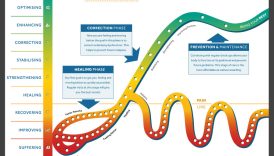Thriving Together: How to Prioritize Health in Your Family

Importance of Family Health
When it comes to overall well-being, family health cannot be understated. Family health is not only about the absence of illness; it encompasses a holistic view of wellness that impacts emotional, physical, and mental aspects of life. In today’s fast-paced world, it’s easy to overlook the health of family members as everyone juggles work, school, and social commitments. However, prioritizing family health is essential for fostering a supportive and thriving household. Consider this: a family that engages in healthy routines together strengthens bonds, creates shared experiences, and cultivates good habits that last a lifetime. For instance, Sarah, a mother of three, found that by experimenting with different healthy recipes every Sunday, not only was her family eating better, but they were also having fun cooking together and discussing their week. Such shared activities can blossom into cherished traditions and contribute significantly to a healthy family culture. Importance of family health includes:
- Thriving Together: How to Prioritize Health in Your Family
- Importance of Family Health
- Creating a Healthy Environment
- Balanced Nutrition
- Regular Physical Activity
- Mental Well-being for the Family
- Stress Management
- Communication and Support
- Preventive Healthcare for Every Family Member
- Regular Check-ups
- Vaccinations and Screenings
- Building Healthy Habits Together
- Healthy Meal Planning
- Family Fitness Activities
- Improved Emotional Connections: Healthy families communicate better, leading to more robust emotional ties.
- Reduced Chronic Diseases: Regular exercise and nutritious eating can lower the risk of diseases such as obesity, diabetes, and heart disease, impacting generations.
- Enhanced Resilience: Families that prioritize health are often better equipped to deal with stressors, fostering resilience among each member.
Moreover, children who grow up in families that prioritize health are more likely to carry those values into adulthood. This cycle of health and well-being is supremely beneficial as it nurtures a generation committed to making informed lifestyle choices. Ultimately, investing time and effort into family health creates a foundation for happier and more fulfilling lives. By consciously focusing on building a healthy environment, families can ensure that they are not just surviving but thriving together. Transitioning to the next steps involves creating a healthy environment that nurtures both body and mind.
Creating a Healthy Environment
Balanced Nutrition
Creating a healthy environment for the family starts with balanced nutrition. Food is more than just fuel; it plays a crucial role in shaping well-being and health outcomes. Emphasizing whole, nutritious foods not only equips family members with the essential nutrients they need but also cultivates good eating habits that last a lifetime. For instance, Lisa and her kids made a weekend ritual of visiting the local farmer’s market. Exploring fresh produce together made it easier to choose healthy options throughout the week while teaching the children about where their food comes from. To implement balanced nutrition, consider the following strategies:
- Incorporate Variety: Aim for a colorful plate by including fruits, vegetables, whole grains, lean proteins, and healthy fats. A variety aids in ensuring that the family gets a broad spectrum of nutrients.
- Plan Family Meals: Cooking together as a family can enhance not only the meals’ nutritional quality but also strengthen relationships. Assign each family member a role in meal prep to foster teamwork.
- Educate: Sharing knowledge about nutrition can spark interest in healthy eating. Discuss why certain foods are beneficial and involve children in meal choices.
Regular Physical Activity
Alongside balanced nutrition, regular physical activity is essential for creating a healthy family environment. Exercise doesn’t have to feel like a chore; it can be fun! Think outside the box—family fitness can come in the form of sports, hikes, or even dance-offs in the living room. When the entire family engages in physical activities together, it not only promotes health but also creates wonderful memories. To keep the family active consistently, try the following approaches:
- Set Goals: Create family fitness goals, such as walking a certain number of steps or participating in a local fun run. Celebrate these achievements with a special family treat or outing!
- Make it Variety-filled: Rotate through different activities like biking, swimming, or group workouts. This prevents boredom and allows everyone to discover what they love most.
- Lead by Example: Kids often mimic their parents’ behaviors. Show enthusiasm for exercise, and encourage the little ones to join you.
Nurturing a healthy environment through balanced nutrition and regular physical activity sets the stage for a lifetime of well-being. As families embrace these habits, they lay down the foundation for good health that benefits every member. Now, let’s delve into the importance of mental well-being for each family member.
Mental Well-being for the Family
Stress Management
As families prioritize physical health through nutrition and activity, it’s equally important to nurture mental well-being. One of the critical aspects of mental health is effective stress management. Family life is often busy and filled with various pressures—from work deadlines to school projects and everything in-between. Finding ways to cope with stress not only enhances individual well-being but also strengthens familial bonds. For example, in the Thompson household, Fridays are designated as “Family Relaxation Night.” Whether they dive into board games, movie marathons, or simple heart-to-heart talks, this routine allows each member to unwind and share their week’s highs and lows. Here are some effective stress management strategies:
- Mindfulness Practices: Introducing practices like deep-breathing exercises, yoga, or meditation can help families cope with stress together. Even five minutes a day can make a difference.
- Time Management: Encourage family members to prioritize their tasks, making room for leisure and downtime. Creating a family calendar can help balance schedules.
- Physical Check-ins: Encourage everyone to express their feelings periodically. Understanding stress levels allows families to address issues before they become overwhelming.
Communication and Support
Strong communication serves as the backbone for a supportive family environment. When family members freely express their thoughts and feelings, it cultivates trust and connection. Learning to listen actively and provide support can go a long way in enhancing mental well-being. In the Garcia family, evening dinners are sacred—a time where everyone shares their experiences and feelings without judgment. To enhance communication and support within the family, consider these approaches:
- Establish a Safe Space: Create an environment where everyone feels comfortable sharing their emotions. Encourage openness by actively listening and giving thoughtful responses.
- Utilize ‘Family Meetings’: Regularly schedule informal gatherings where everyone discusses their feelings, plans, and even concerns. This can help identify stressors and provide opportunities for group support.
- Celebrate Achievements: Acknowledge and celebrate each other’s accomplishments, no matter how small. This fosters a sense of pride and reinforces family bonds.
Prioritizing mental well-being is essential for a healthy family dynamic. Equipping family members with tools for stress management and ensuring open lines of communication creates a nurturing atmosphere that benefits everyone. Moving forward, it’s crucial to consider preventive healthcare for every family member to further support and enhance their health journey.
Preventive Healthcare for Every Family Member
Regular Check-ups
As families cultivate a nurturing environment that supports mental well-being, it’s crucial not to overlook the importance of preventive healthcare. One of the most effective ways to ensure each family member stays healthy is through regular check-ups. These visits help identify potential health issues early on, making treatment easier and more effective. For instance, the Adams family has made it a tradition to schedule their check-ups together—every June, they head to the clinic as a unit. Not only does this foster a sense of teamwork, but it also ensures that no one’s health gets neglected. Here are essential aspects to consider regarding regular check-ups:
- Establish a Schedule: Create a health calendar where each family member’s check-ups, including dental and vision appointments, are clearly marked. This visual reminder helps everyone stay accountable.
- Document Health History: Keeping a record of family health history can provide valuable information to healthcare providers. This documentation aids in identifying risks for various conditions.
- Discuss Health Goals: Use check-up appointments as an opportunity to discuss health goals and improvements with your healthcare professional. This engagement encourages proactive health management.
Vaccinations and Screenings
In addition to regular check-ups, staying up-to-date with vaccinations and screenings is vital for family health. Vaccines protect individuals not just from preventable diseases but also contribute to community immunity. The Johnson family makes it a point to review their vaccination records around their birthdays—a fun way to celebrate and ensure they’re protected. Key points to consider for vaccinations and screenings include:
- Follow Scheduling Guidelines: Keep track of immunization schedules for children and adults, ensuring everyone is vaccinated according to health recommendations.
- Screening Tests: Stay aware of necessary screenings—such as mammograms, colonoscopies, and cholesterol checks—as family members age. Tailoring these screenings based on each person’s unique health profile can save lives.
- Educate About Immunizations: Make sure every family member understands the importance of vaccinations. Host discussions about how these shots protect not just the individual but the larger community as well.
By emphasizing regular check-ups and vaccinations, families can adopt a preventive healthcare approach that safeguards their long-term health. This proactive mindset encourages a culture where wellness is prioritized. As families embrace these practices, they provide a stable foundation for building healthy habits together. Next, we will explore how building healthy habits as a unit can further enrich family life.
Building Healthy Habits Together
Healthy Meal Planning
Building on the foundation of preventive healthcare, one of the most effective ways families can foster health is through healthy meal planning. When families come together to plan meals, they not only ensure that everyone eats nutritious foods but also create a space for creative collaboration. The Miller family, for instance, spends every Sunday afternoon preparing meals for the upcoming week. This ritual allows them to explore new recipes together and ensures they make healthier choices than they might during a busy week. To make healthy meal planning effective, consider these strategies:
- Create a Weekly Menu: Sit down together and decide on meals for the week. Involve everyone in the process to encourage a sense of ownership and excitement about what they’re eating.
- Incorporate Seasonal Produce: Take advantage of seasonal fruits and vegetables for their nutritional value and freshness. They also make meals more vibrant and flavorful!
- Prep Together: Spend time as a family prepping meals—whether chopping vegetables, marinating proteins, or portioning snacks. This not only saves time during the week but makes the cooking experience enjoyable.
Family Fitness Activities
Next, complementing healthy meal planning with regular family fitness activities can take the wellness journey a step further. Physical activity is fundamental for good health, and doing it together can deepen bonds while improving overall fitness levels. The Thompson family loves to hike every weekend, discovering new trails in their area. The anticipation of these adventures encourages everyone to stay active throughout the week. Here are some engaging ideas for family fitness activities:
- Outdoor Games: Organize a family game day with activities like soccer, frisbee, or capture the flag. Fun in the sun encourages everyone to move without it feeling like a workout.
- Group Classes: Look for local classes that welcome families, such as yoga, dance, or martial arts. Participating together promotes a sense of community and accountability.
- Challenge Each Other: Set up weekly fitness challenges—like who can do the most push-ups, walk the most steps, or try the most new activities. Small competitions can foster motivation and excitement.
By embracing healthy meal planning and participating in family fitness activities, families can seamlessly integrate wellness into their everyday lives. These habits not only set a positive example for younger generations but also create treasured family moments filled with love, laughter, and health. In conclusion, when families prioritize health together, they pave the way for happier, healthier lives.





